Smithsonian Science for Global Goals

Welcome to the Smithsonian Science for Global Goals Project, which provides youth around the world, ages 11-18 with the knowledge and skills to understand the world’s most pressing issues and to become agents for change in their own communities. Through a series of freely available community research guides, young people use their communities as their laboratory to investigate the science that underlies the United Nations Sustainable Development Goals (SDGs). Developed by the Smithsonian Science Education Center in collaboration with the InterAcademy Partnership, Young people define and implement their own sustainable actions to help solve the greatest challenges of our time.

We have designed the Smithsonian Science for Global Goals project to:
- Create a transdisciplinary approach to learning focused on real-world problems.
- Engage young people’s ideas, enthusiasm and energy, inviting them to take the lead on creating a better world.
- Use science and social science to help young people arrive at sustainable solutions.
- Drive young people to become action takers, collecting data in their own communities in order to better understand the world’s most pressing issues, and arriving at locally sustainable solutions.
- Be easily customizable to reflect local communities’ needs, interests, and priorities.
- Support young people to develop Sustainability Mindsets.
You can read more about our Smithsonian Science for Global Goals in our letter to educators.
Smithsonian Science for Global Goals Guides
-
 Curriculum
CurriculumOcean! How can we create a sustainable future for the ocean?
-
 Curriculum
CurriculumEnergy! How can we ensure sustainable energy for all?
-
 Curriculum
CurriculumBiotechnology! How can we ethically create a sustainable future using biotechnology?
-
 Curriculum
CurriculumEcosystem Resilience! How can people and ecosystems build resilience to change?
-
 Curriculum
CurriculumClimate Resilience! How can communities adapt to a changing climate?
-
 Curriculum
CurriculumClimate Action! How can we mitigate human impacts on the atmosphere?
-
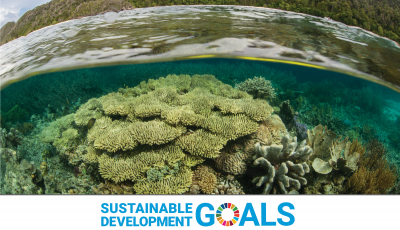 Curriculum
CurriculumBiodiversity! How can we balance the needs of people with the needs of other living things?
-
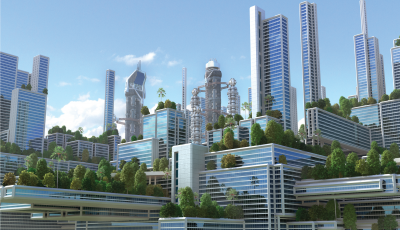 Curriculum
CurriculumSustainable Communities! How will we help our community thrive?
-
 Curriculum
CurriculumFood! How Do We Ensure Good Nutrition for All?
-
 Curriculum
CurriculumMosquito! How Can We Ensure Health For All From Mosquito-borne Diseases?
-
 Curriculum
CurriculumVaccines! How can we use science to help our community make decisions about vaccines?
-
 Curriculum
CurriculumCOVID-19! How Can I Protect Myself and Others?
-

Exploring NOS Through Podcasts
-
 Curriculum
Curriculum¡Mosquito! ¿Cómo podemos garantizar la salud para todos contra las enfermedades transmitidas por los mosquitos?
-
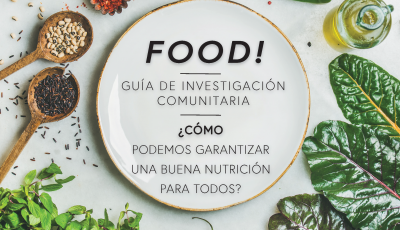 Curriculum
Curriculum¡Food! ¿Cómo podemos garantizar una buena nutrició para todos?
-
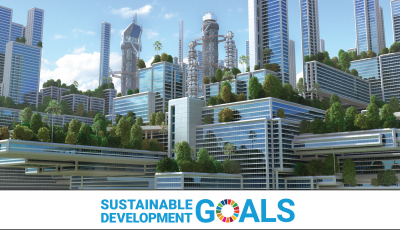 Curriculum
Curriculum¡Comunidades Sostenibles! ¿Cómo contribuiremos al progreso de nuestra comunidad?
-
 Curriculum
Curriculum¡Biodiversidad! ¿Cómo podemos equilibrar las necesidades de las personas con las necesidades de otros seres vivos?
-
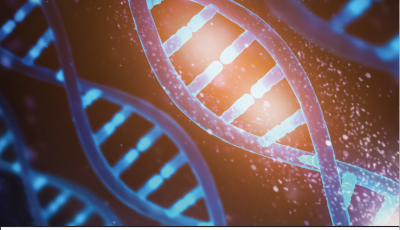 Curriculum
Curriculum¡BIOTECNOLOGÍA! ¿Cómo podemos crear un futuro sostenible usando labiotecnología de forma ética?
-
 Curriculum
CurriculumSustainable Communities! How will we help our community thrive? المجتمعات المستدامة! كيف يمكننا مساعدة مجتمعنا على الازدهار؟
-
 Curriculum
Curriculum¡Lucha Contra El Cambio Climatico! ¿Cómo podemos mitigar el impacto humano en la atmósfera?
-
 Curriculum
Curriculum¡El Océano! ¿Cómo podemos crear un futuro sostenible para el océano?
-
 Curriculum
Curriculumواحتياجات الكائنات الأخرى؟ كيف يمكننا تحقيق التوازن بين احتياجات البشر التنوع البيولوجي!
-
 Curriculum
Curriculum¡ENERGÍA! ¿Cómo podemos garantizar una energía sostenible para todos?
If you are an educator or community partner and want to bring the Smithsonian Science for Global Goals Project to your community, get started with these 5 steps:
1. Explore the foundation for Smithsonian Science for Global Goals
To learn more about Smithsonian Science for Global Goals, start with this short video and explore the research base of the Smithsonian Science for Global Goals project here.
Download the Video Transcript
2. Decide how to use Smithsonian Science for Global Goals in your school or community
As an educator implementing Smithsonian Science for Global Goals with young people, there are some choices that you can make to customize the content. We offer two different types of guides:
- Starting with Sustainability Lesson Sets are designed to support youth aged 11-18 in initial explorations into topics of sustainability. The lesson sets consist of educator and youth-facing lessons that include reading and literacy components, investigations, hands-on activities, quotes from STEM professionals, and opportunities for creativity. Supporting supplemental materials include slide decks, worksheets, games, and videos.
- Community Research Guides are built around broad, multi-faceted subject areas, and may look very different from location to location. They generally take more time to complete, and invite young people to explore the areas of the topic that they are most interested in, and then take action upon the issue.
Choose your material: Here are the available lesson set or guide. Which one will you choose?
- Starting with Sustainability Lesson Sets
- Community Research Guides:
- Biodiversity! How do we balance the needs of humans with the needs of other living things? / Biodiversity En Español/ Biodiversity in Arabic
- Biotechnology! How can we ethically create a sustainable future using biotechnology? /Biotechnology En Español
- Climate Action! How can we mitigate human impacts on the atmosphere? /Climate Action En Español
- Climate Resilience! How can communities adapt to a changing climate?
- COVID-19! How can I protect myself and others? (available in 25 languages)
- Ecosystem Resilience! How can people and ecosystems build resilience to change?
- Energy! How can we ensure sustainable energy for all? /Energy En Español
- Food! How can we ensure good nutrition for all? / Food En Español
- Mosquito! How can we ensure health for all from mosquito-borne disease? / Mosquito En Español
- Ocean! How can we create a sustainable future for the ocean? / Ocean En Español
- Sustainable Communities! How will we help our communities thrive? / Sustainable Communities En Español/ Sustainable Communities in Arabic
- Vaccines! How can we help communities to understand vaccines? (Available in Spanish)
Choose your time commitment:
- If you plan to undertake a Community Research Guide start-to-finish, it will take up to 16 weeks. But you and your young people do not need to commit 16 weeks to understand and gain value from this material and to begin to develop Sustainability Mindsets. Community Research Guides are designed to be customized and adapted to suit local needs.
- Decide what parts you are going to do. Review the web page for the guide you have chosen, explore the content, and utilize any additional supports that are offered on the page.
- Choose your technology:
- Limited tech: As the educator guiding this work, you will reference the materials online and then communicate them to young people. You can also print the materials that you need and want to use with your young people. This option works best if young people do not have access to technology.
- Low-tech: Provide young people with access to the PDF of the activities that the team will be doing together. This works best if young people have access to computers, tablets, or mobile phones.
- High-tech: Upload the materials your learning management system of choice, and utilize the tools within your own system to help your young people carry out the activities.
3. Participate in training to use Smithsonian Science for Global Goals most effectively
The Smithsonian is putting together a suite of professional development to help you become familiar with this content and prepare to use it with young people. In the meantime, check in on our events page or contact Katherine Pedersen Blanchard at BlanchardKP@si.edu for additional training support.
4. Implement Smithsonian Science for Global Goals in your community
Now it is time to bring this material to your school or community. All of the Smithsonian Science for Global Goals guides can be done with limited resources, and some activities need no resources at all! Therefore, it is an ideal program to be undertaken in-person, via distance learning, or in a hybrid model. Smithsonian Science for Global Goals may be a very different way of teaching and learning than you or your young people have experienced in the past. That’s okay! While this is a new and different approach to teaching, it will ensure that the young people in your community will be prepared to take on the greatest challenges of our lifetimes. The Smithsonian believes that educators and young people have the power to change the world, and we are so glad that you want to be a part of this movement.
5. Share your data and experiences
The Smithsonian Science for Global Goals Project exists through generous contributions from our donors and funders. In order to continue funding this work, we need to know who is using this material, where they are using it, and how it is supporting young people. We ask for your help! Please share how you are using this work in the following ways:
- Through a form:
- Through an email:
- Please email BlanchardKP@si.edu to tell us about all of your great work! We love to receive photos and videos of young people and their work in action.
- Through social media:
- Join the Smithsonian Science for Global Goals movement by connection on Facebook, Instagram, or Twitter and use #SmithsonianScienceForGlobalGoals and #SSfGG.

If you are interested in supporting the development or implementation of Smithsonian Science for Global Goals to increase our impact and reach, please see our storymap and contact the SSEC Division for Advancement and Partnerships at WalstonI@si.edu.
View the Global Goals Storymap

Learn more about Smithsonian Science for Global Goals by downloading our media kit.
Download The Global Goals Media Kit

Learn about the case for Smithsonian Science for Global Goals by downloading our case statement.

Would you like to learn more about transdisciplinary learning and convergence education? Click here for a list of research articles on this topic.
VIEW ARTICLES about Convergence Education
Complete Guides
Module Title and Development Goals Target Alignment
 Mosquito! How do we ensure health for all from mosquito-borne disease?
Mosquito! How do we ensure health for all from mosquito-borne disease?
3.3
 Food! How do we ensure good nutrition for all? Malnutrition, obesity, nutritional needs, food sources/pathways, health implications, connection between nutrition and human development, varying nutritional needs (e.g., pregnant women and children)
Food! How do we ensure good nutrition for all? Malnutrition, obesity, nutritional needs, food sources/pathways, health implications, connection between nutrition and human development, varying nutritional needs (e.g., pregnant women and children)
2.2 • 3.4 • 12.3
 Sustainable Communities! How will we help our community thrive?Urban planning, infrastructure, upgrading housing, sanitation, pollution, watershed/impervious surfaces, sociological issues in cities, wellness-inspired architecture, green spaces
Sustainable Communities! How will we help our community thrive?Urban planning, infrastructure, upgrading housing, sanitation, pollution, watershed/impervious surfaces, sociological issues in cities, wellness-inspired architecture, green spaces
9.1 • 9.4 • 11.1 • 11.2 • 11.3 • 11.6 • 11.7 • 11.A
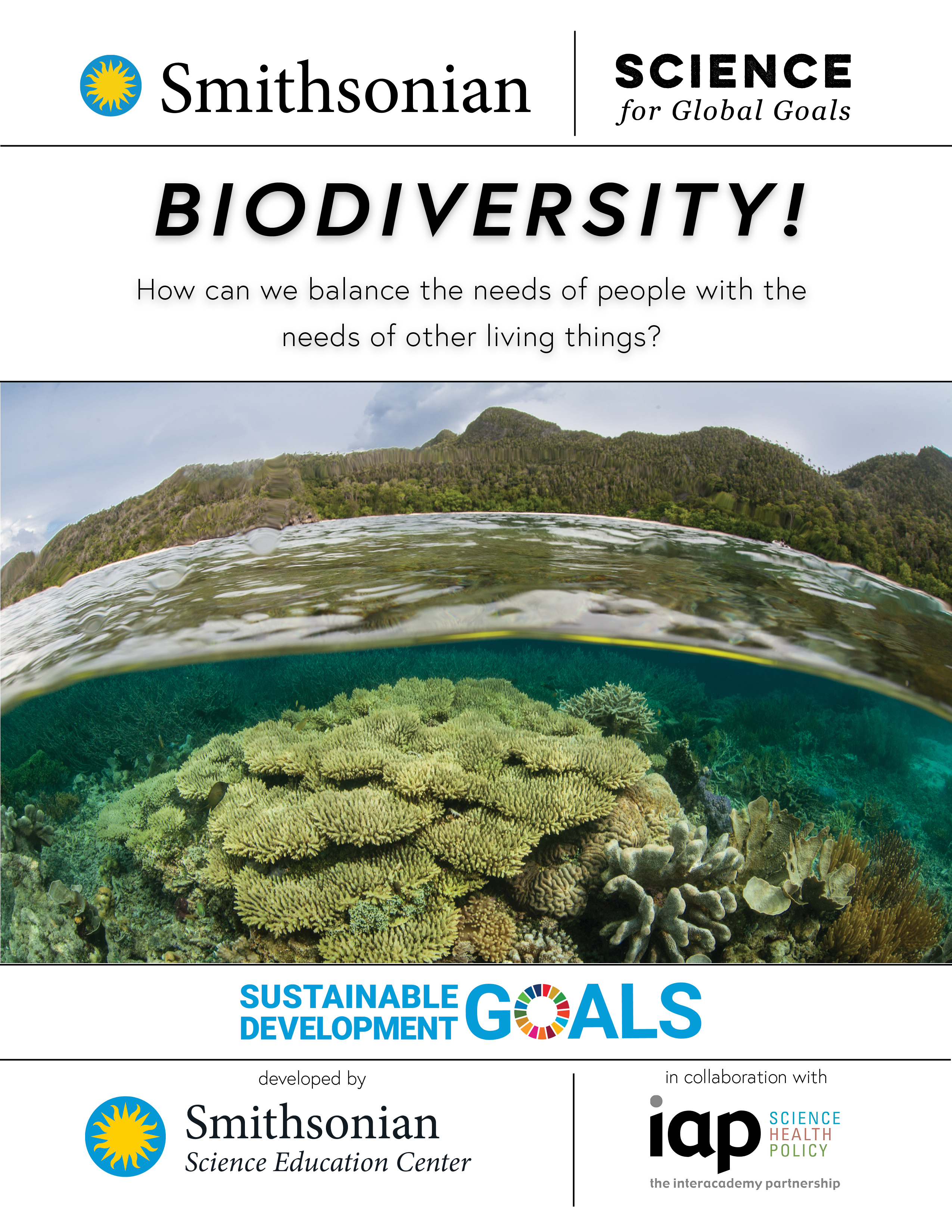 Biodiversity! How do we balance protecting Earth’s diverse resources with human needs? Need for diverse plants to respond to changing weather conditions, finding novel medical cures in biodiverse areas, economic impacts for protecting biodiverse-rich areas, farming practices and impacts on biodiversity (e.g., everyone using the same seeds, GMOs), livestock biodiversity, endangered animals
Biodiversity! How do we balance protecting Earth’s diverse resources with human needs? Need for diverse plants to respond to changing weather conditions, finding novel medical cures in biodiverse areas, economic impacts for protecting biodiverse-rich areas, farming practices and impacts on biodiversity (e.g., everyone using the same seeds, GMOs), livestock biodiversity, endangered animals
2.5 • 2.A • 14.2 • 15.1 • 15.2 • 15.5 • 15.6 • 15.7 • 15.8 • 15.9
 Biotechnology! How can we ethically create a sustainable future using Biotechnology? Food systems, materials, human health, genetic data, the environment, and security
Biotechnology! How can we ethically create a sustainable future using Biotechnology? Food systems, materials, human health, genetic data, the environment, and security
2.3 • 2.5 • 3.2 • 3.3 • 3.4 • 3.7 • 10.3
 Energy! How can we ensure sustainable energy for all? Equitable access, appropriate use, economic considerations, implications for increased access, connection to climate change, clean/dirty energy, renewables
Energy! How can we ensure sustainable energy for all? Equitable access, appropriate use, economic considerations, implications for increased access, connection to climate change, clean/dirty energy, renewables
1.4 • 7.1 • 7.A • 7.B
 Ocean! How can we be a part of healthy ocean systems? How humans interact with the oceans and coastal areas, the effects of those interactions and an analysis of the sustainability, pollution, fisheries
Ocean! How can we be a part of healthy ocean systems? How humans interact with the oceans and coastal areas, the effects of those interactions and an analysis of the sustainability, pollution, fisheries
14.1 • 14.2 • 14.3 • 14.4 • 14.5 • 14.A
 Climate Action! How can we mitigate human impacts on the atmosphere?
Climate Action! How can we mitigate human impacts on the atmosphere?
Causes and impacts of climate change, acid rain/ocean acidification, impacts and possible technological (partial) solutions
13.1 • 13.2 • 13.3 • 13.B • 14.3 • 15.2 • 15.3
Tentative Topics
Module Title, Potential Subtopics, and Sustainable Development Goals Target Alignment
 Water: How do we balance fair water use for all? Safe water, equitable access, water use efficiency, water and border issues, water scarcity, role of technology, water law
Water: How do we balance fair water use for all? Safe water, equitable access, water use efficiency, water and border issues, water scarcity, role of technology, water law
6.1 • 6.3 • 6.4 • 6.5 • 6.6 • 6.A • 6.B
 Healthy Ecosystems: How do we balance local ecosystem needs with global implications? Analysis of local ecosystems, ecosystem issues (particularly those caused by humans), mitigating actions, ecosystem services, deforestation/desertification (as applicable)
Healthy Ecosystems: How do we balance local ecosystem needs with global implications? Analysis of local ecosystems, ecosystem issues (particularly those caused by humans), mitigating actions, ecosystem services, deforestation/desertification (as applicable)
15.1 • 15.2 • 15.3 • 15.4 • 15.5 • 15.6 • 15.7 • 15.8 • 15.9
 Pollution, Environment, and Health: How do we protect human health and ecosystems? Water pollution, sanitation issues, hazardous runoff, industrial pollution, solid waste management (landfills), plastic pollution
Pollution, Environment, and Health: How do we protect human health and ecosystems? Water pollution, sanitation issues, hazardous runoff, industrial pollution, solid waste management (landfills), plastic pollution
3.9 • 6.2 • 6.3 • 6.6 • 8.4 • 11.6 • 12.4 • 12.5 • 14.1
 Weather and People: How do we balance economics and preparation? Impacts of extreme weather on agriculture, housing, cities, impacts of ocean level rise, causes of extreme weather, using technology to prepare for disasters (earthquakes, floods, tsunami, mudslides, wildfires, etc.), community emergency preparedness
Weather and People: How do we balance economics and preparation? Impacts of extreme weather on agriculture, housing, cities, impacts of ocean level rise, causes of extreme weather, using technology to prepare for disasters (earthquakes, floods, tsunami, mudslides, wildfires, etc.), community emergency preparedness
1.5 • 2.4 • 11.B • 11.C • 13.1 • 13.3 • 13.B • 15.3
 Agriculture: How do we balance production, economics, and the environment? Food pathways, food waste, agricultural practices and the environment, impacts of extreme weather, GMOs, land ownership, technology and farming, agriculture financing
Agriculture: How do we balance production, economics, and the environment? Food pathways, food waste, agricultural practices and the environment, impacts of extreme weather, GMOs, land ownership, technology and farming, agriculture financing
2.3 • 2.4 • 2.A • 2.C • 12.3
 Pandemic: How do we prepare for a pandemic? Possibilities of and responses to global pandemic, institutional and individual roles in prevention and response, causes of pandemic and local practices
Pandemic: How do we prepare for a pandemic? Possibilities of and responses to global pandemic, institutional and individual roles in prevention and response, causes of pandemic and local practices
3.3 • 3.D
 Consumption and Production: How do we balance economic and environmental needs? Equitable and sustainable use of natural resources, systemic power differentials, materialism, environmental and economic impacts of consumption
Consumption and Production: How do we balance economic and environmental needs? Equitable and sustainable use of natural resources, systemic power differentials, materialism, environmental and economic impacts of consumption
12.1 • 12.2 • 12.5 • 12.8 • 12.A
 Access: How do we balance supports for individuals with different needs? Technology, access to education, role of the government and individuals, economic impacts
Access: How do we balance supports for individuals with different needs? Technology, access to education, role of the government and individuals, economic impacts
4.5 • 4.A • 8.5 • 10.2 • 10.3
*All topics align to targets 4.7 • 16.7 • 17.6 • 17.17 Read More on Target Alignments